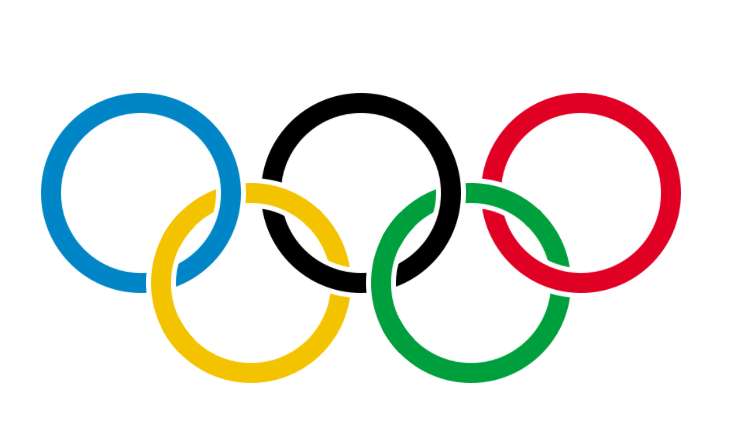The Missing Rings

The Olympic flag is made up of five interlocking rings. It dates back to 1914 but because the 1916 Games were canceled due to World War I, it wasn’t used until the 1920 Games in Antwerp. Given the political climate of the time, it’s unsurprising that the flag is drenched in symbolism and was designed to be a symbol of unity. Per Pierre de Coubertin, the founder of the International Olympic Committee (via Wikipedia), “the six colors [including the flag’s white background] combined in this way reproduce the colors of every country without exception.” And the symbolism goes beyond the flag’s design — the physical flag is part of a long-standing tradition that occurs at the closing ceremony of each Games.
Known as the “Antwerp Ceremony,” the ritual is straight-forward; the mayor of the host city presents the official flag to the mayor of the next Games’ host. The flag — sometimes called the “Antwerp Flag” because it was first used there — then hangs in the city hall of the new host town until that city’s Games. The Antwerp Ceremony, as the New York Times reported, has taken place in every Games since 1920, and the flag presented to the Paris mayor in 1920 was passed on every four years until 1988 — when the fabric, having done its job, was retired.
Well, kind of. The Antwerp Ceremony at the 1920 Games didn’t actually have a flag — and the flag passed down from 1924 to 1988 wasn’t the one used at the 1920 Games. That’s because when it came time for the flag ceremony, the flag was nowhere to be found.
And then in 1997, it turned up.
That year, at a U.S. Olympic committee banquet, a reporter was speaking to a long-retired athlete named Hal Haig Prieste about the 1920 Games. Prieste took bronze in the 10-meter diving competition, but that wasn’t the only thing he took. Prieste was 100 or 101 years old at the time of the banquet and was reminiscing about his time as an Olympian, when the reporter told him that the original flag went missing at the Games he participated in 77 years earlier. Priest, per another New York Times article, replied simply with ”I can help you with that. It’s in my suitcase.”
Prieste claimed that a night or two before the closing ceremony, his teammate Duke Kahanamoku — the gold medal winner in the 100-meter freestyle (and, later, the man generally credited with popularizing surfing) — dared him to climb the flagpole and steal the flag. As Prieste was unaware of the significance of the flag, he took the dare without much of a second thought. After, he figured the flag would make for a nice memento of his one time as an Olympian, so he folded it up and placed it in the bottom of his suitcase, where it stayed for the next few decades. He apparently meant no harm by the prank beyond petty theft — he figured he was stealing one of many Olympic flags used at the Games — and never previously had reason to mention his caper to anyone beyond his friends.
But that changed at the 1997 banquet. And when Prieste learned about the flag’s significance from the reporter, he graciously agreed to return it. In 2000, during the flag-returning ceremony just before the Sydney Games, Prieste, age 103, told the Times “I ain’t going to be around long. I had it a long time. A lot of my friends have seen it. You can’t be selfish about these things. It’s no good to me. I can’t hang it in my room. People will think more of me by giving it away than by keeping it.”
As the flag was generally undisturbed over that period of time, it was in rather good condition, although not good enough to be used in future flag ceremonies. (Here’s a picture of Prieste holding the flag during the return ceremony.) Instead, the flag is now on display at the Olympic Museum in Lausanne, Switzerland — with a plaque thanking Prieste for returning it. Prieste passed away in 2001.
Bonus fact: In 1936, Liechtenstein made its debut at the Summer Olympics, sending six athletes to Berlin. None of them came back with medals, but they did come back with some interesting information — their flag wasn’t unique. The flag of Liechtenstein, at the time, was a blue bar running horizontally over a red bar — you can see it here — and the team Liechtenstein was surprised to learn that the flag of Haiti had the exact same design. The historical coincidence was short-lived, however; Liechtenstein changed its flag in 1937, adding a crown in part to differentiate itself.
From the Archives: Capture the Flag: Canada and Denmark’s kind of silly “flag war.”
Take the Quiz: Name all the countries to host the Olympics.
Related: What Olympic Rings would look like if they decided to start a family. Or something.
